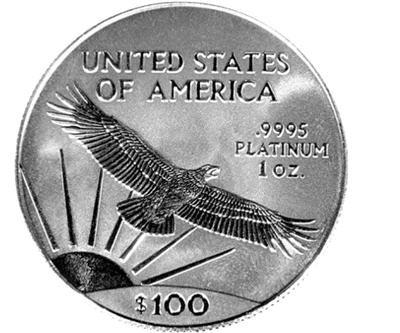A really, really valuable platinum coin that could pay all of America’s debt

The trillion-dollar platinum coin idea is in circulation again as the Obama administration seeks to raise the $16.4 trillion debt limit.
As reported during this summer’s first big debt fight, the president always had an out, printing a platinum coin that would monetize the entire U.S. debt.
Econobrowser, which says the idea is sound but admittedly far-fetched, explains the mechanics.
When you go to the bank and deposit some money, you can then write cheques against those funds:
The U.S. Treasury also has an account with the Fed. When you write a check to the IRS, your bank’s account with the Fed is debited and the Treasury’s account is credited. The Treasury can use those funds to buy anything it wants, by instructing the Fed to transfer those reserves back to some bank to whose customer the Treasury wishes to make a payment.
Although Congress has prescribed limits on the Treasury’s ability to print currency or mint coins of copper, nickel, silver, or gold, the law specifically says (hat tip: Brad Plumer) that there are no restrictions on what kind of platinum coins might be issued.
What would the Treasury do with a trillion dollar coin, you ask? Why, deposit it in their account with the Fed, of course. The Fed would then credit the Treasury’s account with 1 trillion dollars. The Treasury could in turn then order the Fed to transfer those reserves to the accounts of any banks to whom the Treasury owes money. The result is that the Treasury’s bills are all paid with money that would be newly created by the Fed.
It’s a fiscal sleight of hand, but it must look tempting as the current fiscal cliff negotiations become more factious. Failure to lift the debt ceiling in the summer shook investor’s confidence and set back the economic recovery.
More News
{{ commodity.name }}
{{ post.title }}
{{ post.date }}



Comments